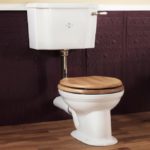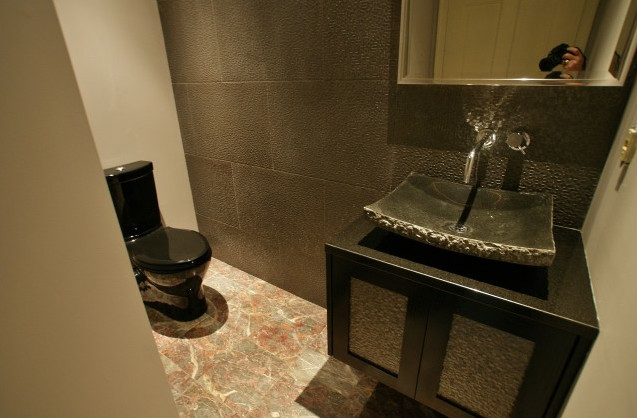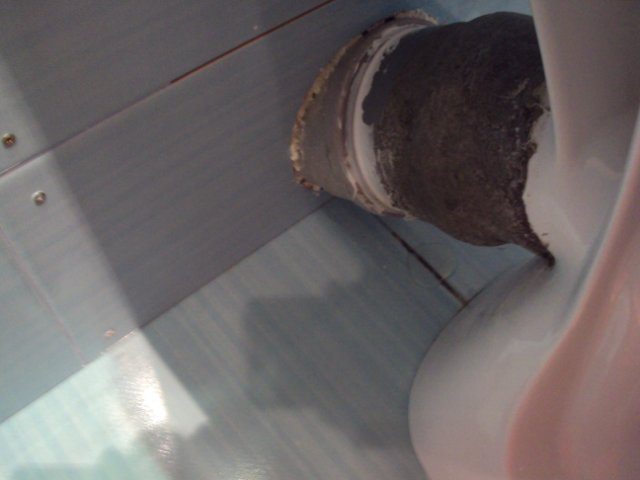How to remove the tank from the toilet
The flush cistern is the most fragile and damage-prone part of the entire toilet structure. Experts believe that almost eighty percent of all malfunctions lie in this element. To replace the cistern, you will need to completely dismantle it.
The design of a drain tank, regardless of type, is quite simple. But without knowing its intricacies, replacement can be a difficult task.
The content of the article
What types of cisterns are there?
Knowing the specifications will allow you to choose the appropriate model. All waste tanks can be divided into groups according to various criteria.
Based on the location of the toilet cistern, the following types are distinguished:
- Monoblock - the tank and toilet bowl form a single unit. It is impossible to replace the top without replacing the entire toilet.
- Separate - the tank and toilet bowl are independent of each other.
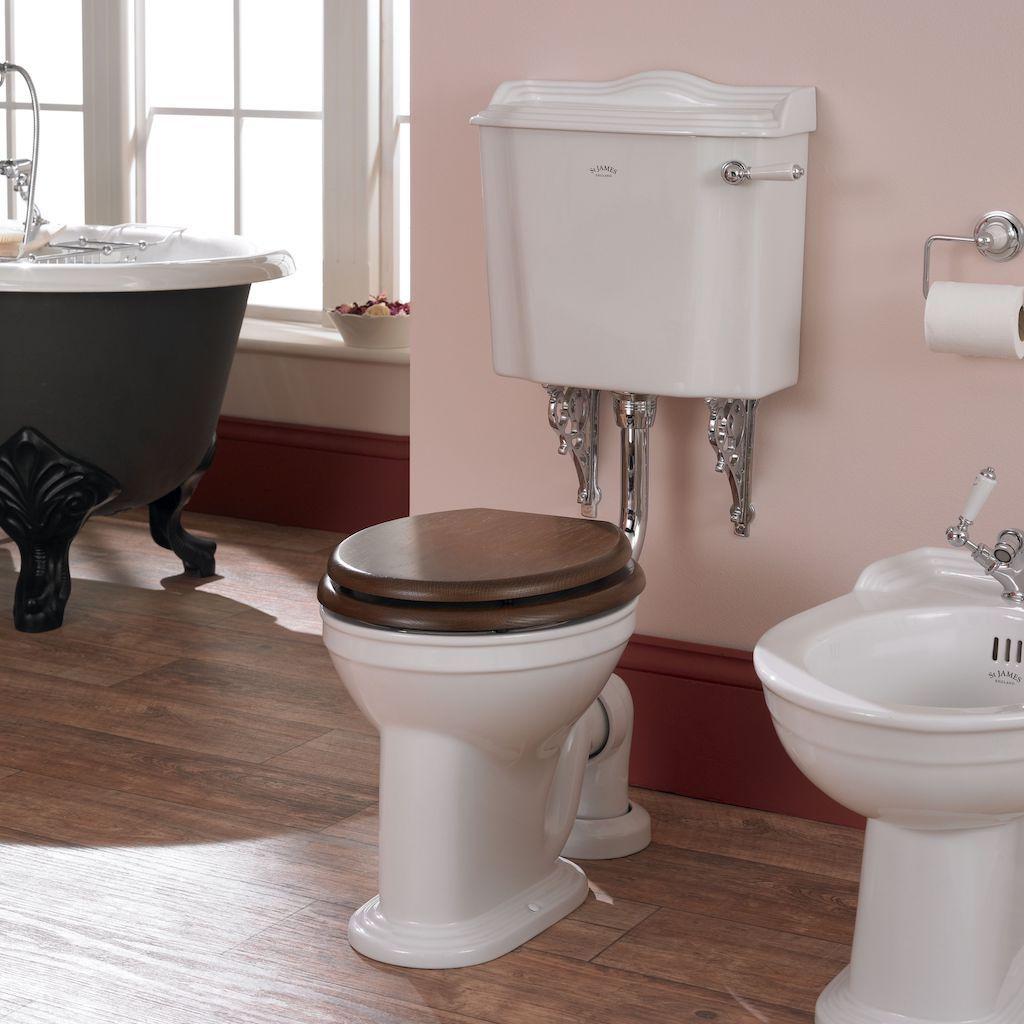
By type of fastening there are:
- mounted models;
- attached models;
- built-in models.
The type of drain mechanism can be:
- pneumatic;
- lever;
- push-button;
- stock
For filling and draining water:
- float valves - have a valve made in the form of a piston or membrane;
- side ones are equipped with an automatic camera that looks like a glass.
Tank design
As previously mentioned, all tanks have the same structure - the differences are solely in the design features. How does the drain tank work?
Any cistern is primarily a container for water. It can be made of ceramics, plastic or metal. The tank can have a wide variety of shapes, and is equipped with a lid on top, which is made of the material used for the production of the tank itself. The water is released using a button, handle or lever. They are connected to the drain mechanism.
The main things that are inside any tank are: fittings, float, siphon, diaphragm and lever for adjusting the jet.
No matter what kind of mechanism is installed inside, it consists of two parts. This is the drain and locking part. The shut-off allows water to fill the tank. It shuts off the water when it is completely full. The drain part comes into effect after the drain button is pressed.
Any toilet tank has a standby mode. When it is in this mode, water fills the container until it reaches the required limit. The weight of the water begins to put pressure on the rubber bulb, which, in turn, blocks the water.
In order to reset the water, you need to press the button. There are possible options here, depending on the design features of the tank. When the flush mechanism is activated, the hole opens and, without any obstruction, water rushes into the toilet.
Removing and disassembling the drain tank
A control system that monitors the supply and level of water is available in each tank. Modern toilets are equipped with mechanisms that are quite complex in design.
In new houses there are not only new models, but also those that have long been outdated. Their disassembly is possible right on site without removing the tank.But it can also be dismantled. Which option is optimal depends on various factors.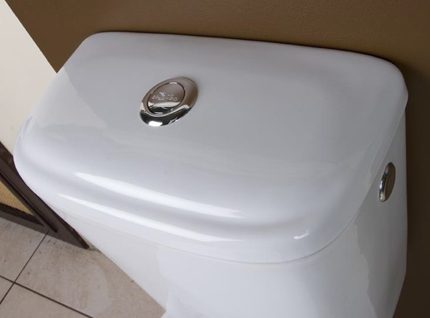
As a rule, dismantling is necessary to completely replace the tank along with the entire mechanism with a more advanced model.
Reference! The tank needs to be removed only if there is a leak in the places where it is connected to the toilet. If the gaskets are worn out, the mounting bolts are broken, and cracks appear.
Removing the water reservoir
Typically, the toilet tank is secured with two studs or bolts, the diameter of which is from five to seven millimeters. Metal pins are used for fastening. It can be bronze, brass, steel.
Steel is used on outdated types of tanks. Steel products are relatively short-lived. It happens that already a year after purchase, such fasteners are completely eaten away by rust.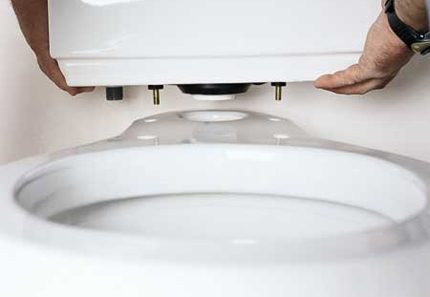
There are two holes for mounting, which are made in the bottom of the tank. There are a couple more holes on the back shelf of the device.
Studs are threaded through the holes, onto which gaskets are placed, after which they are tightened with nuts. The tank and toilet are connected by a pipe, which is insulated at the junction.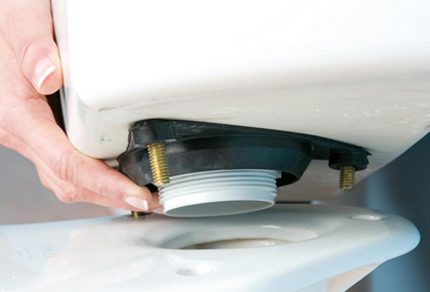
The process of removing the tank has the following sequence:
- The flow of water must be stopped.
- Unscrew the water supply hose.
- Empty the tank.
- Unscrew the release button and remove the cover.
- Wipe the tank dry.
- Unscrew the nuts that hold the studs under the shelf.
All that remains is to lift the tank so that it moves away from its place and move it to where it will be convenient to work.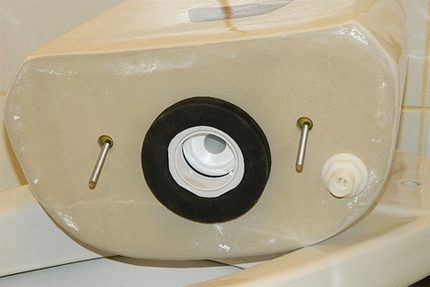
Now you need to understand how to disassemble the flush mechanism, because it is available in all models of toilets equipped with a flush system.
Disassembling the drain mechanism
All mid-range devices usually have a dual button system. Pressing any button starts the drain and water supply module. There are a wide variety of modifications of these devices.
But they all have the same assembly scheme:
- there is a head with buttons and threads for the valve mechanism;
- threaded valve;
- rubber gasket;
- nut for fastening.
The head is removed before removing the cover. Then you need to remove the gasket, which is located on the fastening nut. The gasket may have a pentagonal shape in its inner part or be round.
As a rule, the fastening nut has the same shape. The gasket is removed and the nut is unscrewed. Once the mechanism is released, it is easy to remove. The filling system is removed in the same way.
The fittings are made of plastic. If desired, the device can be disassembled, but it is much easier to buy a new one.
Removing the tank cover
If we return to modern toilet models, we will notice that the question of removing the lid often arises.
In modern designs, everything is arranged somewhat differently than in older models. But, in general, the system has remained unchanged - the lid is pressed by a nut that fits into the valve mechanism.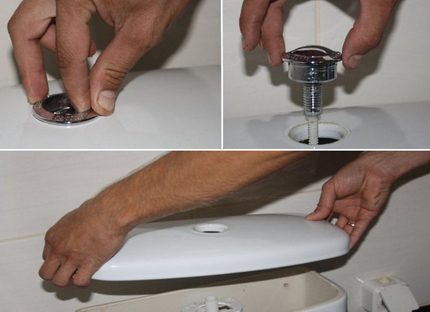
In modern toilets, the pressure nut has been replaced by a head with buttons.
To remove the one-button cover:
- press and hold the button;
- turn the head with the button clockwise;
- Unscrew it from the valve mechanism bushing.
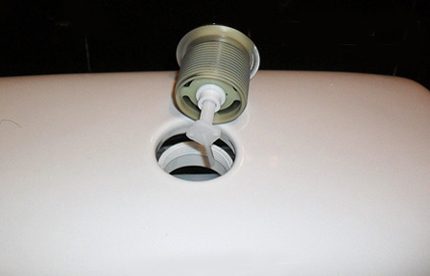
Devices with two buttons are more difficult to remove.
Tank removal with double button
In tanks that have a double push-button system, various fastening methods are often used. In this case, simply unscrewing the head is impossible.
Disassemble following steps:
- We press the small button into the body.
- On the inner wall, which opened when pressed, we find a groove.
- We press the latch in this groove.
- We remove the large button, followed by the small one.
- Unscrew the fixing screw.
The cover can now be easily removed.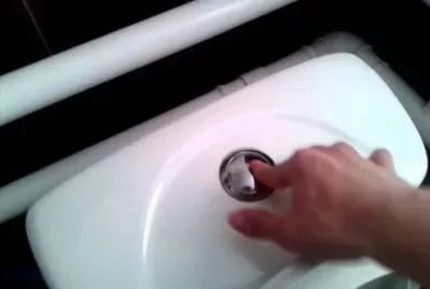
Removing an old toilet cistern
Oddly enough, in many apartments there are still “ancient” toilets. They require repairs only when parts wear out. There are no special questions when it comes to removing and repairing the tank. The design is very simple.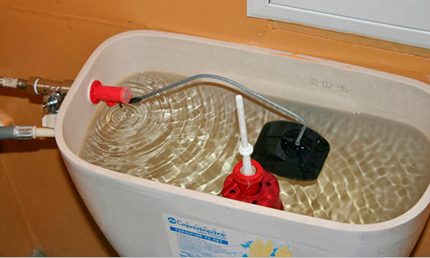
To remove the cover, you simply unscrew the handle of the drain mechanism rod, and then unscrew the nut.
The inside of the tank has a float mechanism, which is responsible for collecting water, and the actual drain mechanism. There are two holes at the bottom of the tank through which the valve is attached.
The tank in toilets of outdated models is no more difficult to remove than in modern devices. The two bolts on the bottom just unscrew.


